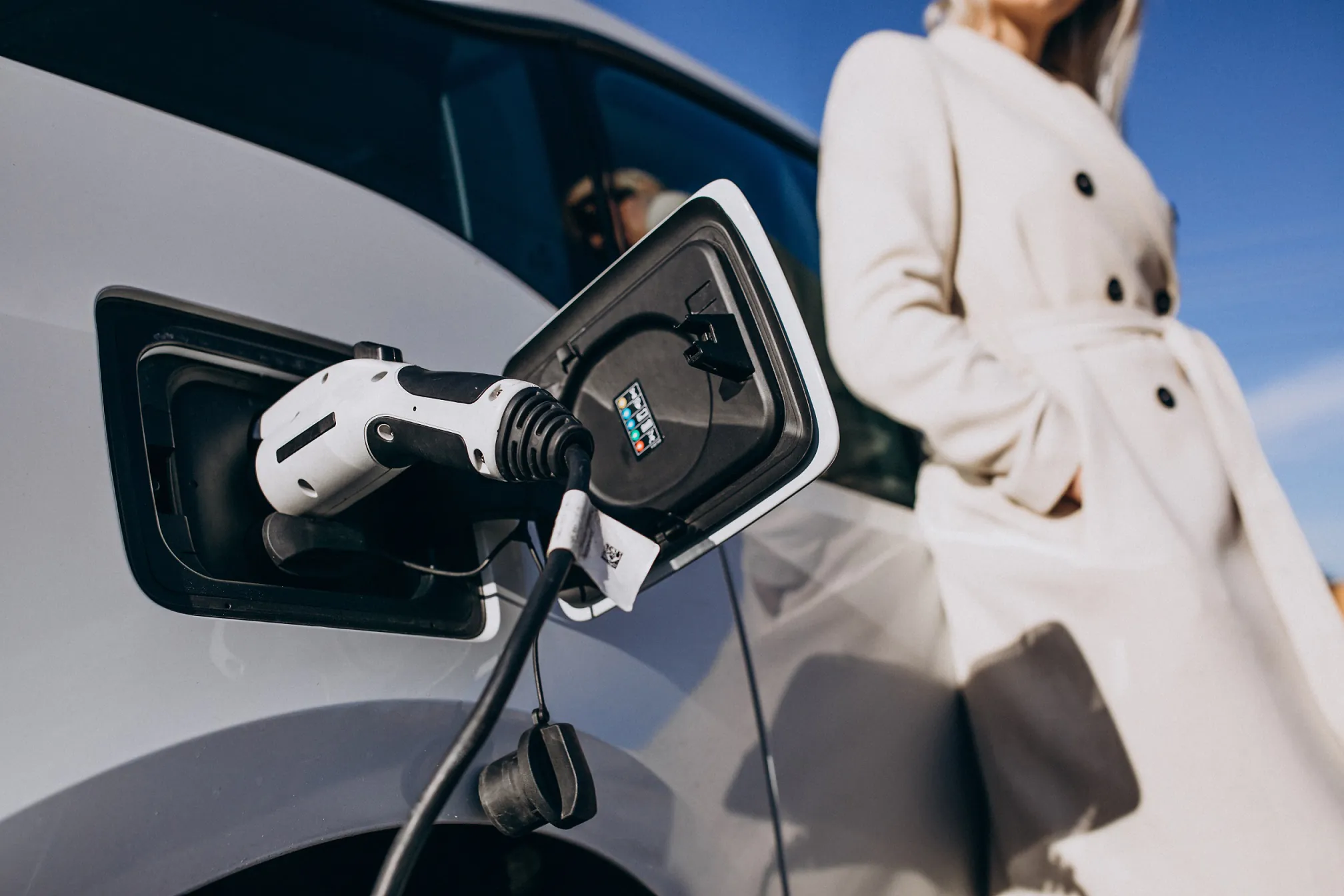Sustainability remains one of the most significant advantages of an EV or electric vehicle. While others love the long-term financial benefits of having EVs, those who are more environmentally conscious can find comfort in the sustainable features of EVs and EV charging. It may not look like it at first, but EVs and EV chargers can help fight climate change.
Environmental Impact of Conventional Cars
Traditional cars or conventional cars are powered by ICE, or internal combustion engines, and fueled by gasoline or diesel to run. While conventional cars have been the norm in society for a long time, they’re also known for their negative effect on the environment. Here are some of their environmental impacts:
- Carbon Dioxide Emissions: Conventional cars emit carbon dioxide (CO2) and other greenhouse gases during fuel combustion. According to the official U.S. Government Source for Fuel Economy Information, typical highway vehicles release about 1.5 billion tons of greenhouse gases (GHGs) into the atmosphere each year. These gases trap heat in the Earth's atmosphere, which, in the long term, contributes to worsening global warming and climate change.
- Air Pollution and Other Greenhouse Gas Emissions: ICE vehicles emit air pollutants such as nitrogen oxides (NOx), carbon monoxide (CO), methane (CH4), particulate matter (PM), and volatile organic compounds (VOCs). These pollutants can contribute to smog formation, respiratory illnesses, and other health problems. These gases contribute to the greenhouse effect and global warming, albeit to a lesser extent than CO2 emissions from fossil fuel combustion. According to the Union of Concerned Scientists, passenger vehicles and heavy-duty trucks are among the major causes of air pollution. These pollutants and gases lead to poor air quality and affect lives more often than not.
- Resource Depletion: The production of conventional cars requires significant amounts of natural resources, such as petroleum for fuel, metals for construction, and water for manufacturing processes. This means that automotive production also has a significant footprint. The extraction and processing of these resources can lead to impacts such as habitat destruction and water pollution.
- Oil Dependency: Conventional cars rely on fossil fuels, primarily petroleum, for their energy needs. This dependence on finite fossil fuel reserves can lead to geopolitical tensions, environmental degradation from oil extraction, and economic instability due to fluctuations in oil prices.
- Noise Pollution: ICE vehicles generate enough noise pollution through engine noise, tire friction, and exhaust systems. This can disrupt ecosystems and negatively impact human health and well-being, especially in urban areas. This is because long-term noise traffic can be a lot more dangerous, leading to serious health effects such as ischaemic heart disease and more.
- Waste Generation: The disposal of conventional cars at the end of their lifespan can contribute to waste generation and landfill space consumption. Additionally, the manufacturing process produces waste materials and by-products that may not be easily recyclable or biodegradable.
- Black Carbon and Aerosols: Conventional cars also emit black carbon (soot) and aerosols. Both of which have warming and cooling effects on the climate and the environment. Black carbon absorbs sunlight and contributes to warming, while aerosols can reflect sunlight and have a cooling effect. However, the net impact of these emissions on global warming is still being studied.
- Feedback and Secondary Effects: The emissions from conventional cars also contribute to feedback loops and amplifying effects that exacerbate climate change. For example, as temperatures rise due to increased GHG concentrations, it can lead to the release of additional GHGs stored in permafrost or methane hydrates. This further intensifies global warming. Indirect effects such as land use change and deforestation associated with road construction, oil extraction, and refining. These activities release additional carbon stored in vegetation and soils, further contributing to atmospheric CO2 concentrations.
How EV Charging Can Help Fight Climate Change
Switching to electrical vehicles or green EV power is one way to reduce carbon footprints and help fight climate change. EV charging infrastructure, and electric vehicles in general, play a crucial role in the transition to more sustainable transportation and society.
While EVs are not free from all negative environmental impacts, they’re a sustainable e-mobility solution. Compared to conventional cars, EVs have lesser direct and indirect contributions to global warming.
Here are a few ways that EV charging can help fight climate change:
EV chargers reduce greenhouse gas emissions
EV chargers facilitate the widespread adoption of electric vehicles, from personal cars to passenger vehicles and more. They produce zero tailpipe emissions during operation and, therefore, reduce overall greenhouse gas emissions. By replacing conventional gasoline and diesel vehicles with EVs, which can be powered by renewable energy sources such as solar or wind power, people can start reducing their impact on global warming. With EVs, individuals and the transportation sector can significantly reduce their carbon footprint and mitigate the impacts of climate change.
EV chargers promote renewable energy integration
Many EV charging stations can be powered by renewable energy sources, either through on-site generation or by sourcing electricity from renewable energy providers. By increasing the demand for renewable energy, EV chargers can accelerate the transition to a cleaner and more sustainable energy system. This reduces the reliance on fossil fuels and lowers greenhouse gas emissions.
EV chargers help optimize grid integration and energy management
Smart charging or advanced EV chargers equipped with the latest energy management capabilities can help optimize grid integration and reduce the environmental impact of charging. These chargers can communicate with the grid to schedule charging during periods of low demand or high renewable energy availability. This can reduce the need for additional generation capacity while minimizing carbon emissions.
A good example of this would be the SOLUM EV Charger. SOLUM Group has brought intelligent solutions to EV charging by incorporating customizable charging speeds, advanced safety features, sustainable capabilities, and more. The SOLUM EV Charger is a convenient and reliable charging experience that ensures optimized EV charging every time.
EV charges encourage energy efficiency and demand response
EV chargers can be integrated with demand response EV programs. This allows utilities to manage electricity demand and balance the grid more effectively. By incentivizing EV owners to charge their vehicles during off-peak hours or when renewable energy generation is high, chargers can support energy efficiency efforts and contribute to the decarbonization of the electricity or transportation sector.
EV chargers also support sustainable urban planning among communities
And of course, the deployment of EV charging infrastructure, particularly in urban areas, can encourage sustainable transportation practices and reduce reliance on private vehicles. By providing convenient access to charging stations, cities can promote the use of electric vehicles for short-distance travel. They can also reduce traffic congestion and improve air quality within urban cities, ultimately mitigating the impacts of climate change on local and regional scales.
Overall, EV charging helps boost the widespread use and preference for electric vehicles. With more electric vehicles and EV chargers in public, society has the possibility of transitioning to a low-carbon transportation system. EV chargers promote renewable energy integration, optimize grid management, and support sustainable urban initiatives, which can help create a cleaner, more sustainable future.











